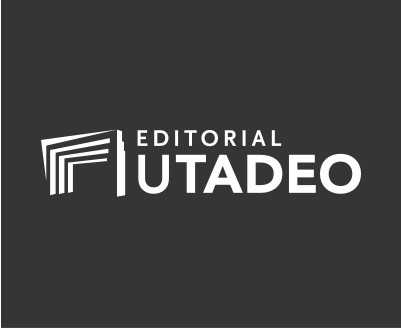
Esta obra está bajo una licencia internacional Creative Commons Atribución-NoComercial-CompartirIgual 4.0.
Esta obra está bajo una licencia internacional Creative Commons Atribución-NoComercial-CompartirIgual 4.0.
Resumen
Este artículo propone un método para calcular el indicador de oee (Eficacia General del Equipo). Esta propuesta se basa en utilizar el concepto de gemelo digital de un equipo para calcular el indicador oee, teniendo en cuenta aspectos relacionados con la transformación digital industrial que requieren las empresas actualmente.
Citas
Ahuja, I. P. S. & Khamba, J. S. (2008). Assessment of contributions of success-ful tpm initiatives towards competitive manufacturing. Journal of Quality in Mainte-nance Engineering. https://doi.org/10.1108/13552510810909966
Andersson, C. & Bellgran, M. (2015). On the complexity of using perfor-mance measures: Enhancing sustained production improvement capability by com-bining oee and productivity. Journal of Manufacturing Systems, 35, pp. 144 – 154. https://doi.org/10.1016/j.jmsy.2014.12.003
Bai, C., Dallasega, P., Orzes, G. & Sarkis, J. (2020). Industry 4.0 technologies assessment: A sustainability perspective. International Journal of Production Econom-ics, 229, p. 107776. https://doi.org/10.1016/j.ijpe.2020.107776
Büchi, G., Cugno, M. & Castagnoli, R. (2020). Smart factory performance and industry 4.0. Technological Forecasting and Social Change, 150, p. 119790. https://doi.org/10.1016/j.techfore.2019.119790
Cercós, M. P., Calvo, L. M. & Domingo, R. (2019). An exploratory study on the relationship of overall equipment effectiveness (OEE) variables and co2 emis-sions. Procedia Manufacturing, 41, pp. 224–232. https://doi.org/10.1016/j.promfg.2019.07.050
Cheng, G., Liu, L., Qiang, X. & Liu, Y. (2016). Industry 4.0 development and application of intelligent manufacturing. in 2016 International Conference on Infor-mation System and Artificial Intelligence (ISAI), (pp. 407–410). https://doi.org/10.1109/ISAI.2016.0092
Eynard, B. & Cherfi, Z. (2020). Digital and organizational transformation of industrial systems. Computers & Industrial Engineering, 139, p. 106197. https://doi.org/10.1016/j.cie.2019.106197
Flores-Ruiz, E. Miranda-Novales, M. G. & Villasís-Keever, M. Á. (2017). El protocolo de investigación vi: cómo elegir la prueba estadística adecuada. Estadística inferencial. Revista Alergia México, 64(3), pp. 364–370. https://doi.org/10.29262/ram.v64i3.304
ISA (s.f.). Isa88, batch control. https://www.isa.org/standards-andpublications/isa-standards/isa-standards-committees/isa88
Jones, D., Snider, C., Nassehi, A., Yon, J. & Hicks, B. (2020). Characterising the digital twin: A systematic literature review. CIRP Journal of Manufacturing Science and Technology, 29, pp. 36 – 52. https://doi.org/10.1016/j.cirpj.2020.02.002
Joppen, R., von Enzberg, S., Gundlach, J., Kühn, A. & Dumitrescu, R. (2019). Key performance indicators in the production of the future. Procedia CIRP, 81, pp. 759 – 764. https://doi.org/10.1016/j.procir.2019.03.190
Liao, Y., Deschamps, F., de Freitas, E. & Ramos, L. F. P. (2017). Past, present and future of industry 4.0 - a systematic literature review and research agenda pro-posal. International Journal of Production Research, 55(12), pp. 3609–3629. https://doi.org/10.1080/00207543.2017.1308576
Marco, C. (2016). Cómo poner en marcha el oee. https://excelencemanagement.wordpress.com/2016/08/02/comoponer-en-marcha-el-oee/
Martínez-Caro, E., Cegarra-Navarro, J. G. & Alfonso Ruiz, F. J. (2020). Digital technologies and firm performance: The role of digital organisational culture. Tech-nological Forecasting and Social Change, 154, p. 119962. https://doi.org/10.1016/j.techfore.2020.119962
Mecalux (s.f.). Miniloads mecalux. https://www.mecalux.com.co/
Muchiri, P. & Pintelon, L. (2008). Performance measurement using overall equipment effectiveness (oee): literature review and practica application discussion. International Journal of Production Research, 46(13), pp. 3517–3535. https://doi.org/10.1080/00207540601142645
Roda, I. & Macchi, M. (2019). Factory-level performance evaluation of buff-ered multi-state production systems. Journal of Manufacturing Systems, 50, pp. 226 – 235. https://doi.org/10.1016/j.jmsy.2018.12.008
Saarikko, T., Westergren, U. H. & Blomquist, T. (2020). Digital transformation: Five recommendations for the digitally conscious firm. Business Horizons. https://doi.org/10.1016/j.bushor.2020.07.005
Schiraldi, M. M. & Varisco, M. (2020). Overall equipment effectiveness: consistency of iso standard with literature. Computers & Industrial Engineering, 145, p. 106518. https://doi.org/10.1016/j.cie.2020.106518
Schleich, B., Answer, N., Mathieu, L. & Wartzack, S. (2017). Shaping the digi-tal twin for design and production engineering. CIRP Annals, 66(1), pp. 141 – 144. https://doi.org/10.1016/j.cirp.2017.04.040
Shahin, A. & Isfahani, N. G. (2015). Estimating overall equipment effective-ness for continuous production lines: with a case study in Esfahan steel company. International Journal of Services and Operations Management, 21(4), pp. 466–478. https://doi.org/10.1504/IJSOM.2015.070252
Sohal, A., Olhager, J., O’Neill, P. & Prajogo, D. (2010). Implementation ofoee–issues and challenges. Competitive and sustainable manufacturing products and services, pp. 1–8.
Vial, G. (2019). Understanding digital transformation: A review and a re-search agenda. The Journal of Strategic Information Systems, 28(2), pp. 118 – 144. https://doi.org/10.1016/j.jsis.2019.01.003
Descargas
Datos de publicación
Perfil evaluadores/as N/D
Declaraciones de autoría
- Sociedad académica
- Universidad de Bogotá Jorge Tadeo Lozano
- Editorial
- Universidad de Bogotá Jorge Tadeo Lozano

 PDF
PDF
 FLIP
FLIP













